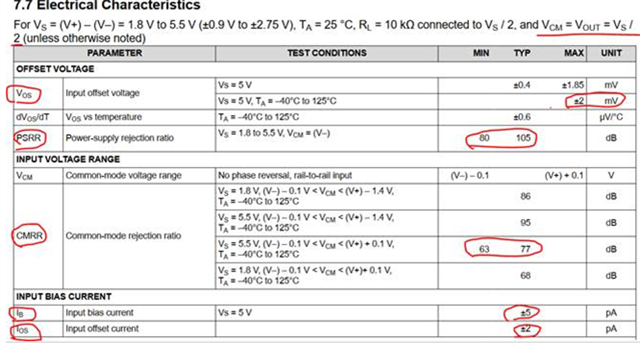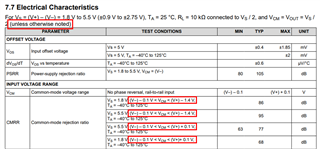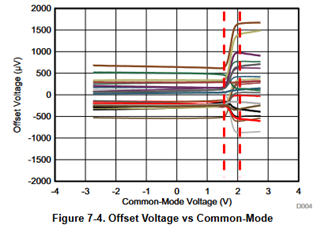Hi team,
Below EC table spec is at VCM=Vs/2. Customer would like to evaluate the full VCM range (from V- -0.5 to V+ +0.5V) output error, how to evaluate below factors variation with CM range?
I see in the figure section we only has ios ibias and Vos with VCM figure, how to evaluate the PSRR and CMRR change with CM voltage? Thank you!

Thank you
Scarlett





